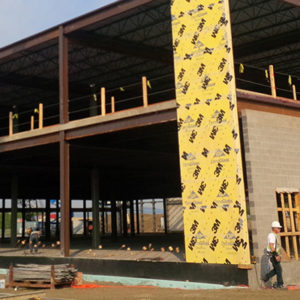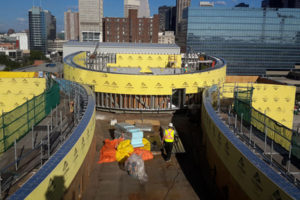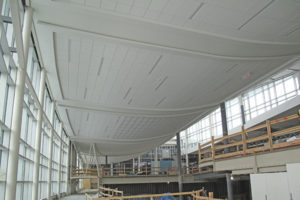
Prefabrication isn’t new to the construction industry, but it carries with it preconceived notions about cost and quality. Here are 6 common myths about prefabricated steel wall systems, debunked:
1. MYTH: Prefabrication is only for temporary buildings.
TRUTH: Prefabricated panels are designed according to an EOR. They are engineered to last and can be used on most building types with Cold-Formed Steel (CFS) stud framing.
2. MYTH: Prefabricated panels aren’t built to code.
TRUTH: Each panel is engineered to meet the design requirement of both the EOR and AOR’s perspective. QA/QC checks throughout factory production ensure panels are manufactured exactly as they are engineered.
3. MYTH: Steel wall panels are flat and rectangular, and you can’t customize the design.
TRUTH: Prefabrication isn’t limited to rectangular panels. Though the use of BIM technology, advanced curved wall panels and aesthetic details can be created according to the architectural drawings. Additionally, the size of panels can be customized to meet the project needs.

4. MYTH: Prefabricated panels are only applicable for exterior walls.
TRUTH: While prefabrication is an excellent solution for exterior wall panels, it can also be used to fabricate soffits and interior elements, such as radius bulkheads, circles, domes, clouds and arches.
5. MYTH: Prefabricated systems are more expensive than traditional building.
TRUTH: Prefabrication decreases actual onsite time, saving construction loan interest. The fast installation of exterior wall panels means the building envelope is closed in quicker, so the interior scope of work won’t be affected by weather delays. Shorter schedules allow general contractors to complete more projects with less manpower in a shorter amount of time. Also, there’s more quality control over materials during factory production, reducing waste removal and labour cleanup costs on the job site.
6. MYTH: Panels prefabricated using wood are cheaper.

TRUTH: Wood as a raw material may be cheaper than steel, but the long-term results can be more expensive. Wood is a combustible material and costs more to insure, and is subject to decay, whereas steel is non-combustible and doesn’t rot or deteriorate.
